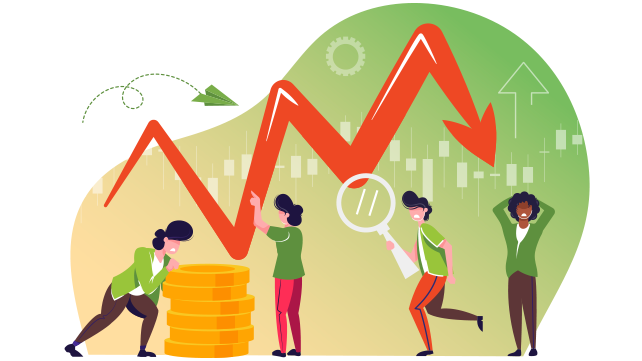Trading Accounts
Trading Conditions
Financials
CFD Trading instruments

Don’t waste your time – keep track of how NFP affects the US dollar!
The ASIC policy prohibits us from providing services to clients in your region. Are you already registered with FBS and want to continue working in your Personal area?
Personal area
Have you ever observed nature? Many things, such as the trajectory of a bee, may seem random. At the same time, they are not – there is nothing random in nature. They appear random only because you don’t know the reasons that push this or that object in a certain direction. Normally, the brain can’t comprehend when too many things happen simultaneously – just like in the market.
When you look at the charts, especially at small timeframes – price moves look random and unpredictable as well. Nevertheless, there are reasons that push the dollar, the euro, the pound, and any other currency or commodity the way they go.
The problem is that the charts you see in a trading terminal provide a limited amount of information. If you were to study a chosen currency pair thoroughly, you would need to know a number of things:
If you knew that, you would be much better at understanding and predicting where the price may head because you would see its inner impulses. However, MetaTrader doesn’t show that. What to do?
Traders involved in the market are like cogs: millions of revolving cogs push the market's mechanism further and move the prices in different directions. However, traders react – they don't randomly decide when and what to buy or sell. They are a second link in the chain of events that precede the last link – the price. Therefore, if you saw this second link, you would be able to judge the immediate impulse that pushes the price. However, if you cannot – which you cannot with MetaTrader – then you go one step before in the chain of events – to the first link. The news.
This is what happens: traders wake up around the world, have their coffee, read the news, and, based on that news, make new trades and adjust existing ones. As a result, what you have to do is watch the news instead of watching other traders. This way, you will make a direct link between the world of events (the fundamentals) and the world of the market (prices).
So first, you follow the news. The rule of thumb is: good news push the related currency upwards, bad news – downwards.
Second, you mark the technical levels: round numbers and clear levels of resistance and support mean much in traders' mass psychology – and there are millions of them. So it's not like the resistance of 1.0000 would be pressing on the price on its own, but if the price hit it a couple of times and reversed, it becomes significant next time, even if the fundamentals favor crossing it. It doesn’t have to be a round number – any level may prove to be resistance or support. Just use common sense: if you see that price bounced from a certain level more than just one, there is something at that level. Mark it and consider it.
Third, trends. Fundamentals are fundamentals because they act fundamentally, not for a moment. Market sentiment may change, but it’s not more than oscillation around certain trends. These trends get formed by the actions of central banks and governments. It's not just emotions that the market follows when hearing that interest rate got increased or reduced in some countries. It’s objective processes such as a decrease or an increase in money supply, purchase activity, savings, credits – all that makes the economy.
Corporations, banks, and state authorities govern those fundamental things. In turn, they dictate the demand and supply of currencies. This is what makes trends. The rule of inertia: a currency pair will continue a large trend as long as the fundamental setting that commanded that trend stays unchanged. So don’t get disoriented by the market sentiment – just like you shouldn’t get disoriented by people’s sentiments. With humans – you look at actions. With prices – you look at actions by big players of the economic world. They make trends, you notice them, mark them, extrapolate them, time-check them, and ride them.
Fourth, it takes time. Just knowing that the market is not random doesn’t provide a tool to trade. It just removes the fundamental fear that’s blinding you. Once it’s removed – you keep trading. Months will pass before you feel comfortable interacting with the market – how else did you imagine the process of making a profit in something that is made of millions of people? Yet, take it easy. It’s not random, but it’s not an easy thing to do. Pressure and time – put both in your study, and see the results.